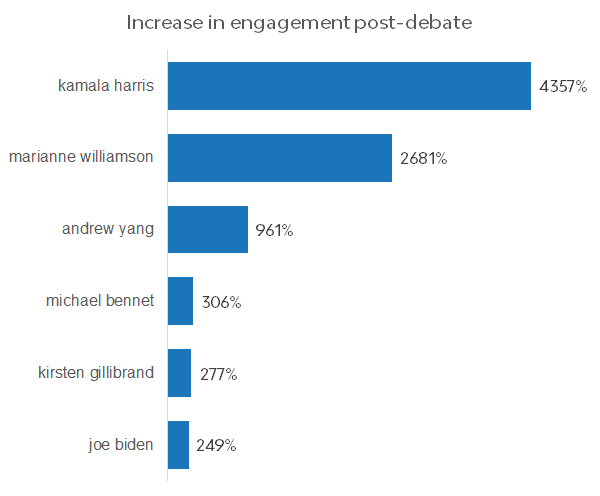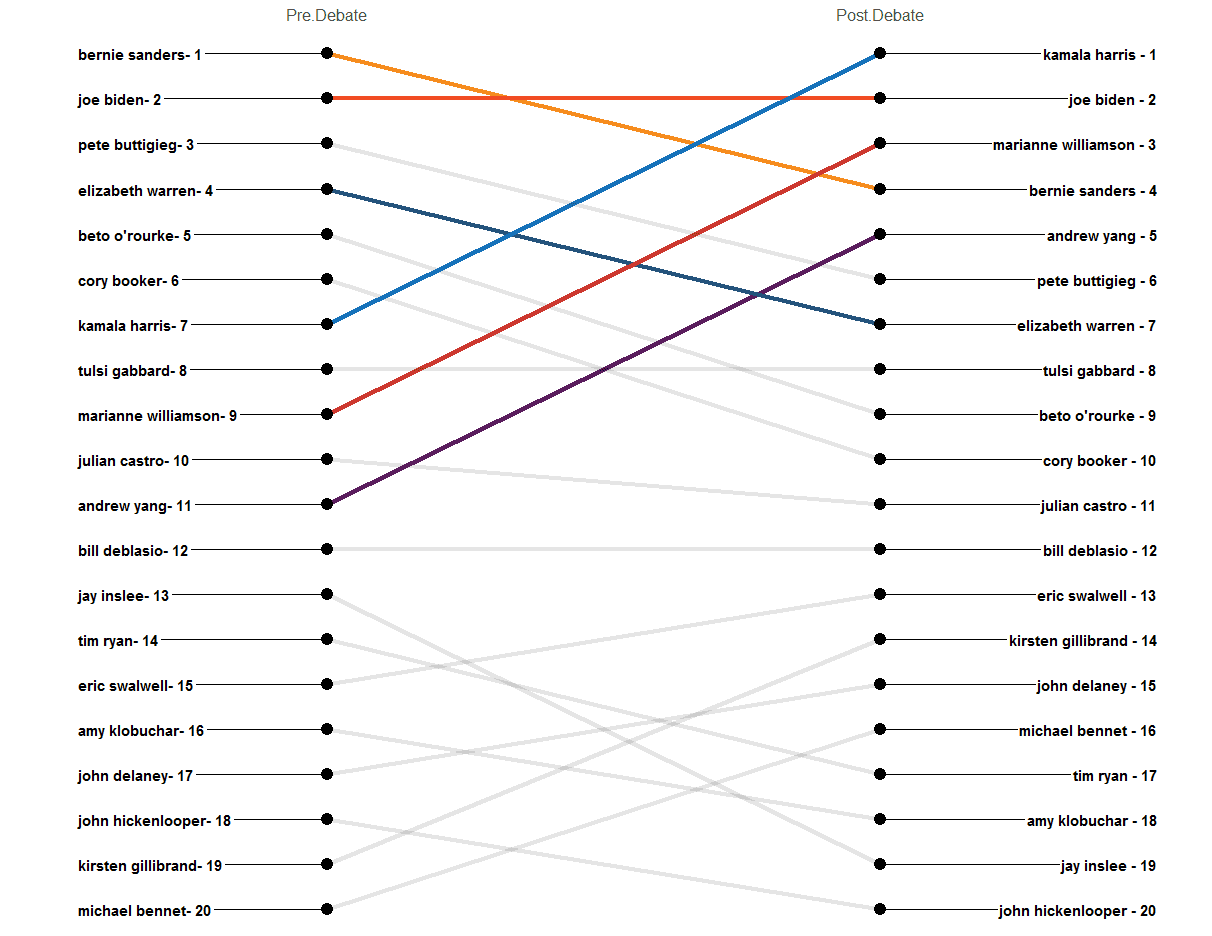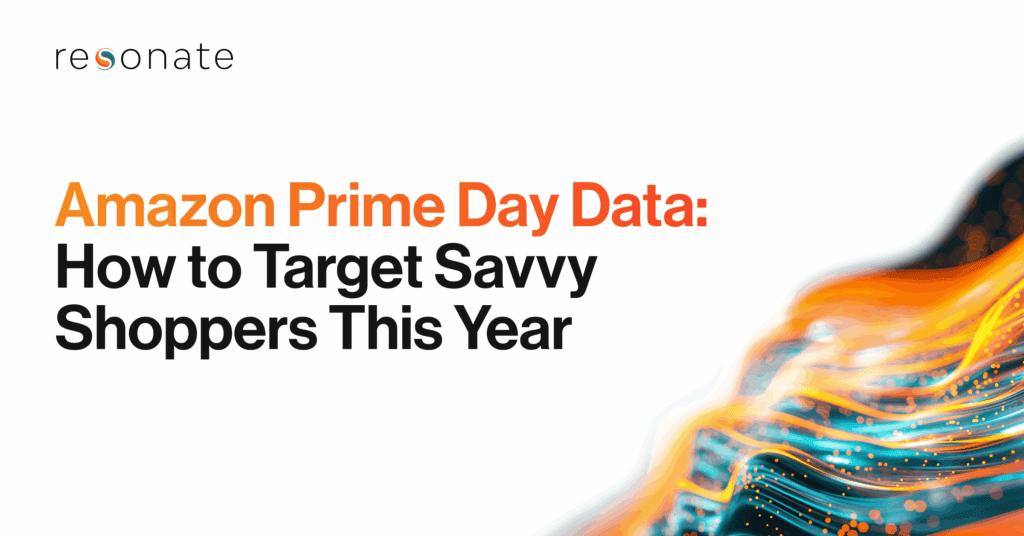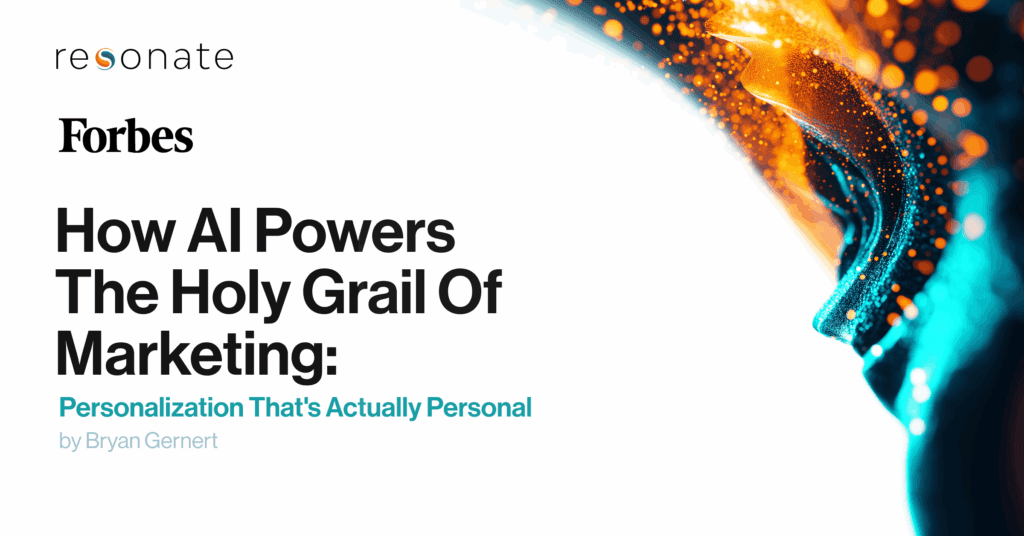What can AI tell us about post-debate polls?
The American electorate is generally viewed as a heterogeneous landscape, centered on candidates and partisan issues with politics that are nationally scaled. The problem with this world view is that it obscures the reality that each voter is an individual with experiences that are unique to their life. The voter file cannot see this at the individual level, and neither can any other form of longhand data analysis.
Artificial intelligence is helpful in truly understanding individual voters and locating myriad groups of like-minded (especially persuadable) voters. AI has exposed the many subtle links between voter groups that are historically divided on a left and right binary axis. Machine learning AI also shows that many voters are evolving from the historically divisive two-party system we’re living in. The problem is that election campaign marketing hasn’t evolved to that same level and targeting is still developed based on merging a voter file with available, and often sloppy, third party data.
Artificial intelligence, as it stands today, unlocks complex insights that we struggle to articulate and understand, such as:
- What candidate/issue will you support and how do you show that support? Why?
- What candidate/issue will you oppose and how will you show that opposition? Why?
- What candidate/issue are you willing to compromise on, and how will you compromise? Why?
AI can atomize the electorate into major groups that simplify our ability to understand and market to these segments.
At Resonate we are incorporating narrow AI into a lot of our products. We use deep learning to develop cutting edge segmentation models across verticals, for example we did an AI-voter landscape study that revealed surprising pre-2020 analysis on hidden dimensions of the voter landscape. It’s also used to empower a counter recommendation system that lets campaigns overcome challenging messaging environments by disrupting media bubbles. The amount of data available to us opens the door to deep segmentation, a type of narrow AI that’s never been used in political science.
The Resonate Platform is able to anonymously analyze 10 billion daily online events on more than 550 million devices across 2 trillion words on 35,000 topics. AI shows us in real time, which candidates saw the biggest lift or decline in viewings of favorable content about them based on online behavior in the seven days prior to, and seven days following, the debate. This is a level of analysis that is unprecedented and stands independent from post-debate polling in both size and scale. Instead of asking people how they feel, it’s measuring what they feel. As the adage goes, actions do speak louder than words.
Who made the biggest impression during the first democratic debates?
The first clear takeaway is that Kamala Harris was a big winner. Online engagement surrounding content related to her increased by a whopping 4,357% in the week following the two-night debate in Miami. This isn’t all that surprising comparative to a lot of the media coverage out there, but what was surprising were some of the other candidates who saw (or did not see) a big lift. Julian Castro and Elizabeth Warren were also called out as post debate “winners” after the Miami twin bill, but our platform showed that neither of them saw a significant increase in engagement in the week following the debates. In fact, Joe Biden, who was widely derided as a post debate “loser” actually saw a 249% increase in post-debate engagement with his content, signaling that interest in him actually increased, despite what was reported in early July.
A breakdown of the biggest post-debate increases in online content engagement is below:

How machine learning declares the debate winner
Think of the American electorate as an extremely complex Rubix cube with hundreds of different colors and sides. It would take a team of analysts weeks to figure out how to straighten everything out and get all the sides to show only one color. Artificial intelligence can do this type of computation in real time, distilling the electorate into digestible segments based on lifestyles, demographics, psychological drivers and an array of other strata based on their digital footprints.
The ability for machine learning to easily categorize and target voters in these incredibly complex ways makes building voter segments based on policy positions and lifestyle choices a much easier process than relying on a voter file and disparate third-party data. It also shows, in real time, which candidates are gaining the most traction based on specific events, like a debate. Think of it as the collective consciousness of the U.S. voter, easily divided into target segments that can be activated and marketed to in a nearly instantaneous process.
When we use machine learning to see which candidates received the biggest bounce in activity after the debate, we take the guesswork out of the equation. The Resonate Platform is seeing the behavior of those who watched the debate, or were influenced by media coverage or their peers, and seeing how it relates to specific candidates. We can even rank them as far as pre-debate and post-debate engagement, shown below, which is a picture of the changes that took place over the two nights in Florida:

What this shows is while Kamala Harris, Marianne Williamson and Andrew Yang were huge post-debate winners, Joe Biden stayed strong, as did Tulsi Gabbard and Bill de Blasio. We also saw that the big losers in engagement were Pete Buttigieg, Beto O’Rourke and Cory Booker. Elizabeth Warren, who the media said was a big beneficiary of the first debate, saw less engagement in the week after the debate, which flies in the face of conventional wisdom.
Polls measure how people feel, but can they do it with this type of accuracy and with the kind of scale that measures data from over 200 million people? Artificial intelligence is a game changer in the space of politics, and adroit campaigns are already making use of the technology to truly understand and communicate with the electorate at the individual level.
What does this mean in Detroit?
You can probably expect more of the same in Detroit from a fair amount of the democratic candidates involved. There will be a lot of talk about red issues and how to beat Donald Trump—but keep your eyes on those candidates who are centering their pitch on specific policy positions. These are the candidates who are seeing the erosion of the left-right divide in American politics in real time; they’re crafting the messages to reach the persuadable voters who could potentially make or break the 2020 election in the next fifteen months.
Are you ready to get to know the American voter in real time? Contact us for a demo to get started.



